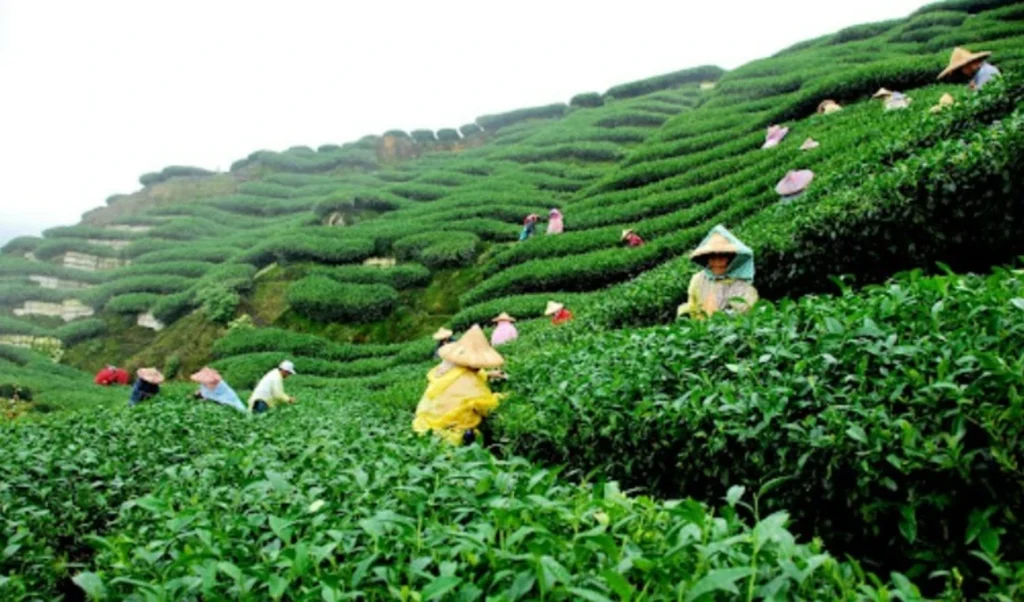“Discover Sonitpur District, Assam’s paradise of natural beauty. Explore lush forests, wildlife, tea gardens, and vibrant cultural heritage in this scenic region.”

Sonitpur District: A Glimpse into its Rich Heritage, Biodiversity, and Cultural Tapestry
Sonitpur District, situated in the northeastern state of Assam, India, is a land of diverse landscapes, vibrant cultures, and a rich historical heritage. Covering an area of approximately 5,324 square kilometers, this district is a captivating blend of nature’s bounty and human endeavors.
One of the most prominent features of Sonitpur District is its geographical diversity. It is flanked by the Brahmaputra River to the north, the Eastern Himalayas to the north-east, and the Bhutan hills to the north-west, making it a region of incredible scenic beauty. The district’s lush green tea gardens, rolling hills, and dense forests attract nature enthusiasts and adventure seekers alike.
The region’s history dates back to ancient times, with mentions in the Mahabharata and the influence of various dynasties. The name “Sonitpur” itself is derived from the Sanskrit words “Sonit” (meaning blood) and “Pur” (meaning town), suggesting its historical significance. Over the centuries, it witnessed the rise and fall of kingdoms, including the Koch, Ahom, and Mughal empires, leaving behind an indelible mark on its culture and heritage.
Speaking of culture, Sonitpur District is a melting pot of traditions. The diverse population, comprising various indigenous communities like the Bodo, Mishing, and Assamese, contributes to the district’s rich cultural tapestry. Festivals like Bihu, Bwisagu, and Durga Puja are celebrated with great fervor, showcasing the district’s vibrant cultural heritage.
The district is also home to several ancient temples and historical sites that reflect its rich past. The Da Parbatia temple, dating back to the 6th century, is a fine example of the region’s architectural prowess. The Agnigarh Hill, known for its legendary love story from the Mahabharata, offers panoramic views of the Brahmaputra River and the town of Tezpur.
Biodiversity is another highlight of Sonitpur District. The Kaziranga National Park, a UNESCO World Heritage Site, is a crown jewel, harboring the world’s largest population of the Indian one-horned rhinoceros. It is also a habitat for Bengal tigers, Asian elephants, and numerous bird species, making it a must-visit destination for wildlife enthusiasts.
Sonitpur’s economy primarily revolves around agriculture, tea cultivation, and tourism. The tea gardens, such as Addabarie and Dhekiajuli, produce some of the finest Assam tea, contributing significantly to the state’s tea industry. The district’s strategic location, with its proximity to the Bhutan border and the Assam-Arunachal Pradesh border, also plays a pivotal role in trade and commerce.
In recent years, efforts have been made to promote eco-tourism in the district, offering visitors a chance to explore its natural beauty while ensuring the conservation of its unique biodiversity.
Famous Places in Sonitpur District
Sonitpur District in Assam, India, boasts a wealth of famous places that showcase its natural beauty, history, and culture. Here are some of the must-visit destinations in the district:
Kaziranga National Park: World-renowned for its population of Indian one-horned rhinoceros, Kaziranga is a UNESCO World Heritage Site. Visitors can embark on thrilling wildlife safaris to spot rhinos, tigers, elephants, and various bird species.
Tezpur: Known as the “City of Eternal Romance,” Tezpur is steeped in mythology and history. Attractions include the scenic Agnigarh Hill, Cole Park, and Mahabhairab Temple.
Da Parbatia: This ancient temple complex, dating back to the 6th century, features exquisite sculptures and is a testament to the region’s rich architectural heritage.
Nameri National Park: Located at the foothills of the Eastern Himalayas, this park offers opportunities for trekking, river rafting, and bird-watching amidst pristine natural surroundings.
Bura-Chapori Wildlife Sanctuary: A lesser-known gem, this sanctuary is home to diverse flora and fauna, including various species of primates and migratory birds.
Orang National Park (Rajiv Gandhi Orang National Park): Known as the “Mini Kaziranga,” this park is another rhino haven and offers boat safaris to explore its wetlands.
Bamuni Hills: Famous for the ancient stone carvings, these hills provide scenic views of Tezpur and the Brahmaputra River.
Charaideo Maidams: These are ancient burial mounds of the Ahom kings and nobles, a UNESCO World Heritage Site, and a significant historical attraction.
Biswanath Chariali: A town famous for its tea gardens, it offers a glimpse into the tea industry and the beautiful Addabarie Tea Estate.
Bhalukpong: Located on the border with Arunachal Pradesh, Bhalukpong is a serene destination known for its natural beauty, trekking trails, and the Kameng River.
Agnigarh: A hillock in Tezpur, this site is famous for its scenic views and the legend of Usha and Aniruddha from the Mahabharata.
Mahabhairab Temple: An important religious site in Tezpur, this temple dedicated to Lord Shiva offers a tranquil atmosphere for spiritual seekers.
These famous places in Sonitpur District offer a captivating blend of nature, history, and culture, making it a destination that appeals to travelers with diverse interests. Whether you’re an adventurer, history enthusiast, or nature lover, Sonitpur has something remarkable to offer.
Read More :-